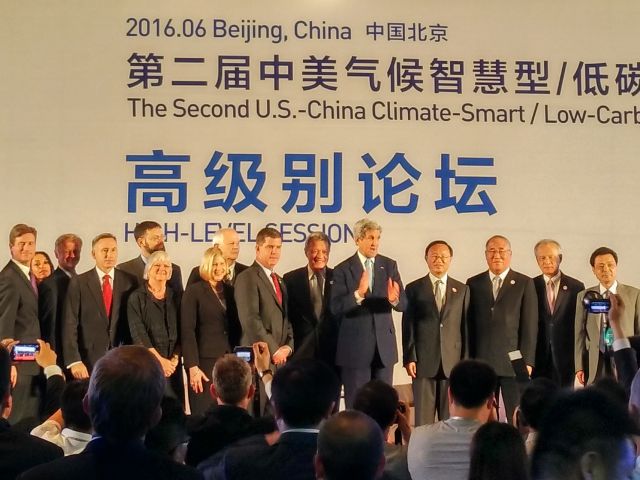
Title
This article was originally posted on the WRI blog, Insights.
More than half the world’s people live in cities, and cities are responsible for more than 70 percent of all energy-related carbon dioxide emissions on Earth. These dramatic statistics mean cities have a critical role to play in addressing climate change. This is especially crucial in China, where fast-growing metropolitan areas like Chengdu – with a population of 14 million -- have become engines for economic, scientific and technological progress. Until recently, Chengdu has not focused on reducing greenhouse gas emissions, even as it emphasized sustainable development.
That changed today during the 2016 China-US Climate-Smart / Low Carbon Cities Summit in Beijing, when Chengdu formally announced its commitment to control carbon dioxide emissions so that they reach a peak around 2025 and decline after that – a target five years ahead of China’s national aim to peak carbon emissions by 2030. With support from WRI and partners, Chengdu completed its 2010 greenhouse gas inventory, set its emission peak target and developed a low carbon-strategic plan to reach its target.
At the summit, China’s Alliance of Pioneer Peaking Cities (APPC) announced that 23 cities and provinces are now members and committed to peaking emissions by or before 2030. These cities and provinces represent about 16.8 percent of China’s population, 27.5 percent of national GDP, and 15.6 percent of national carbon dioxide emissions.
Why China’s Cities Matter
In China, cities play an integral role in helping the country achieve its national climate goals. Cities bore most of the responsibility for achieving the medium-term target set out in the 2011-2015 five-year plan of reducing carbon dioxide emissions by 17 percent per unit of GDP from 2010 levels by 2015. The 2016-2020 five-year plan specifically mentions that more developed cities should peak their emissions ahead of national peaking target.
Recognizing cities’ importance, China’s National Development and Reform Commission selected 42 pilot cities and provinces to join the national low carbon program. These cities act as pioneers for low-carbon practices such as making greenhouse gas inventories, low-carbon action planning, low-carbon economic transition planning and low-carbon technology deployment.
In June 2015, China formally submitted its intended nationally determined commitment (INDC) and committed to peak its carbon dioxide emissions around 2030. Subsequently, the commission elevated its low carbon cities initiatives by establishing the APPC in September 2015. The intention is to encourage cities peak their emissions ahead of the national target year. Eleven cities and provinces joined the APPC as founding members.
Cities are Key to China’s Climate Targets
The voluntary APPC program is important for four reasons:
- Current national commitments are not enough to achieve the global 2 degrees C (3.6 degrees F) target. Cities’ early peaking could help China to reach its national emission peak ahead of 2030 and contribute to the global 2 degrees C target.
- This is the first time in history Chinese cities are committed to long-term emission reduction targets. Before this, they were only committed to five-year intensity targets in line with the national five-year plans.
- This pioneering group of cities are expected to encourage more cities to commit to more ambitious climate actions. This could include the cities currently designated as national low-carbon pilot projects, as well as the new batch of national pilots that to be announced later this year.
- Different parts of China develop at different speeds. Some cities, especially those in the Western region, are still rapidly industrializing and may need more time to get to peak emissions. To balances these cities’ progress, more fully developed cities need to peak emissions ahead of 2030. APPC cities will play an important role in this respect.
While committing to emission peaks is an important step, cities need to turn their commitments into action. They need well-designed plans to help make the transition to a low-carbon economy. They also need accurate data to help make the most effective decisions. They can look to cities like Chengdu and tools like WRI’s emission inventory, emission peaking, and low carbon action planning tools to reach their goals.